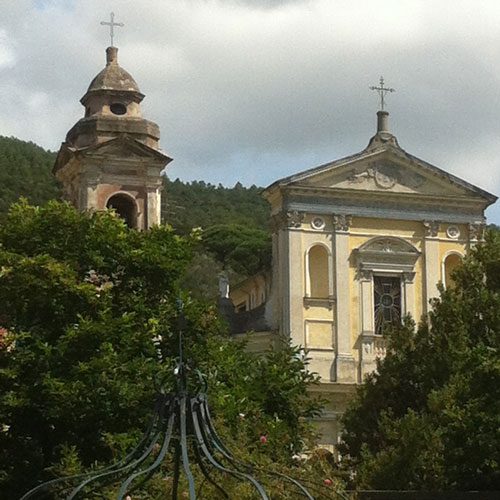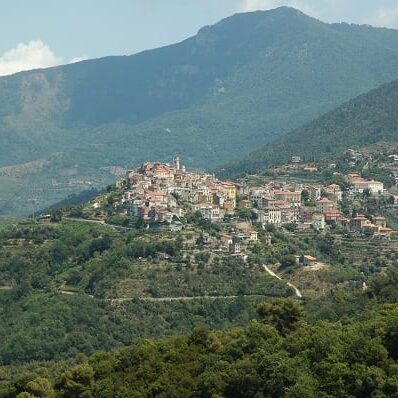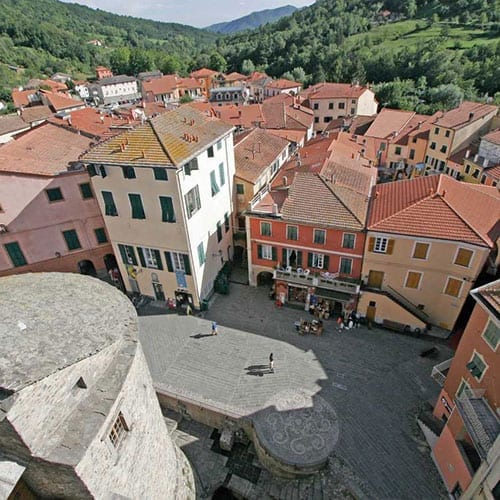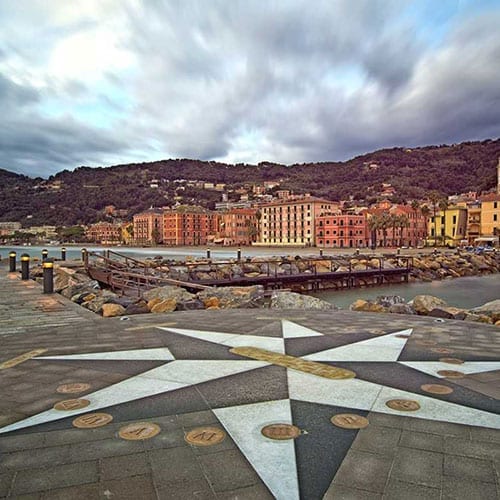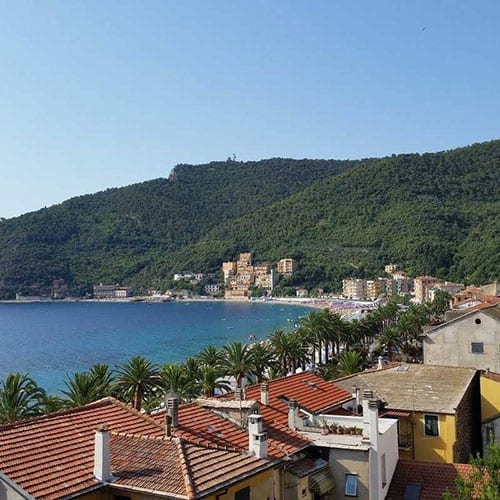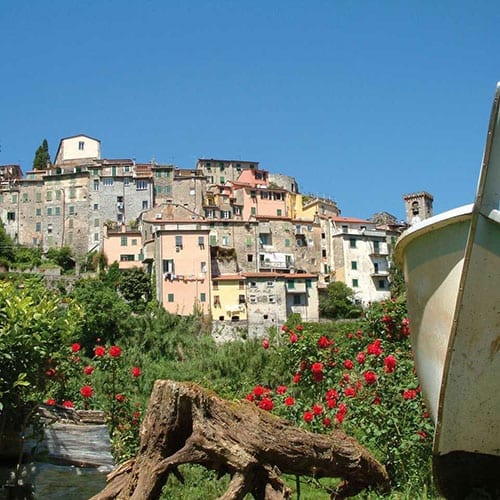 Taggia
Taggia
MUNICIPALITY OF TAGGIA
(Province of Imperia)
Altitude
mt. 39 a.s.l.
POPULATION
14060 (4000 in the borgo)
TOURIST INFORMATION
Tourist office
Villa Boselli, Via P. Boselli, n. 2
Ph. 0184 43733
uit@comune.taggia.im.it
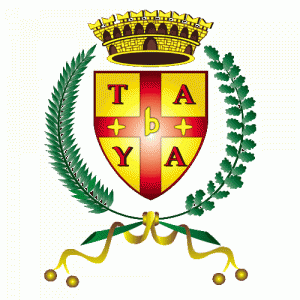 The Name
The Name
Ancient name: Tabia in Antonini Augusti itinerarium (3rd century). The etymology is uncertain, perhaps from tabula (table) referring to the flat river.
The medieval borgo of Taggia is located at 3 kms from the sea, at the entrance to the Argentina Valley. Visitors are welcomed by the monumental Ponte Antico, with 15 arches and a length of 275 mt. Built in the thirteenth century on the left bank of the river, the bridge has been extended until the seventeenth-eighteenth century. Today Taggia is a vast historical settlement, articulated on a series of parallel road from the 10th to the 15th century.
Panorama from the Castle: the ancient defensive fortress of the XII century, rebuilt in 1560-64, has been recovered as an open-air theatre; the old castle today offers an extraordinary panorama over the entire borgo and surroundings.
The Church of Our Lady of Canneto was founded in the early Middle Ages, the result of several renovations, the only surviving of the two sacred buildings on the site (Church of St. Anne was demolished), the church is fascinating with its beautiful Romanesque tower.
The Convent of the Dominican Fathers (1460), a treasure chest of art and faith, preserves polyptychs and frescoes by L. Brea, G. Canavesio and L’Adorazione dei Magi today attributed to Parmigianino.
The Basilica of the Miraculous Madonna, rebuilt in 1675 as the Collegiate Church of S.S. Giacomo and Filippo, has been elevated to a minor basilica; it preserves the statue of the local sculptor S. Revelli declared miraculous by Pius IX in June 1856
The Cave of the Arma/Sanctuary of the Annunziata: included in the municipality of Sanremo (fraz. Bussana) they characterize the panorama of Arma, preserving inside them both a prehistoric deposit dating back to the Neanderthal Man and the patrimony of faith of the church.
The queen of the local gastronomic production is the Taggiasca olive, planted on a large scale. The Taggiasca olive is a small, dark fruit. The oil that is produced (intense yellow, with a tendency to green, fruity and slightly spicy taste, slightly acid), is of an excellent quality and is also the basis of two other typical dishes of the area: the canestrelli, taralli salted with olives or olive oil and the figassa, a focaccia seasoned with tomato, anchovies, olives and garlic.
As for the events, February is the month dedicated to the celebrations of St. Benedict Revelli, Bishop of Albenga and Patron Saint of Taggia. Legend has it that he suggested to the inhabitants of the village how to save themselves from the raids of pirates: from this the Feast of Fires (Bonfires and Fùrgari) on the Saturday closest to February 12; in 1625 he still protected Taggia from the expansionist aims of the Savoy family. (Historical procession last Sunday of February, with summer re-edition in August).
On the weekend closest to 22 July (S.Maria Maddalena) in Taggia is celebrated S. M. Maddalena del Bosco. An archaic feast, based on the ancient agricultural calendar and reshaped by the Benedictines of Taggia on the figure of St. Mary Magdalene, it resumes, between a rural feast at the hermitage in the woods and in the town centre, the rite of the Death Ball.
Last Sunday in July Celebrations of Saint Erasmus in Arma: religious ceremony, blessing of the coast and traditional boat procession with the Saint on Sunday afternoon; firework display on the seafront in the evening.




